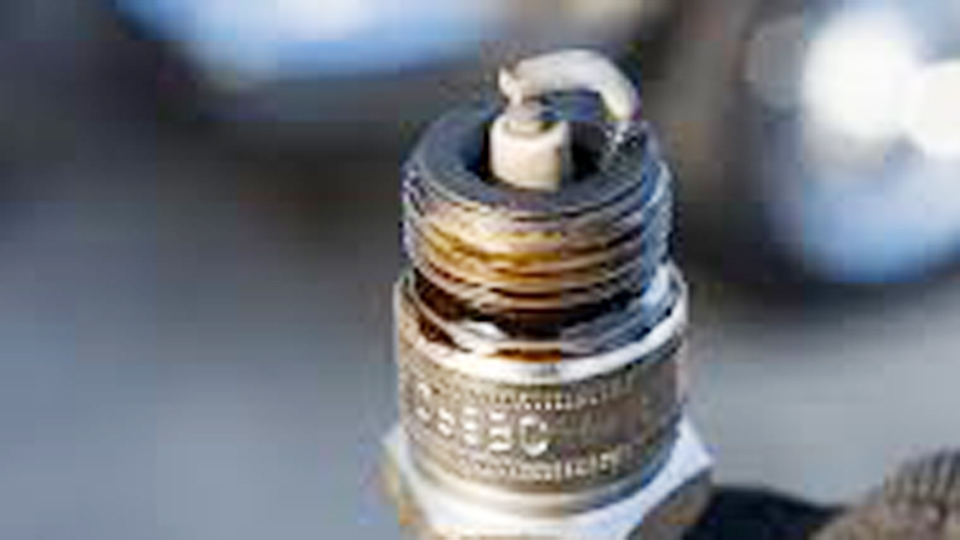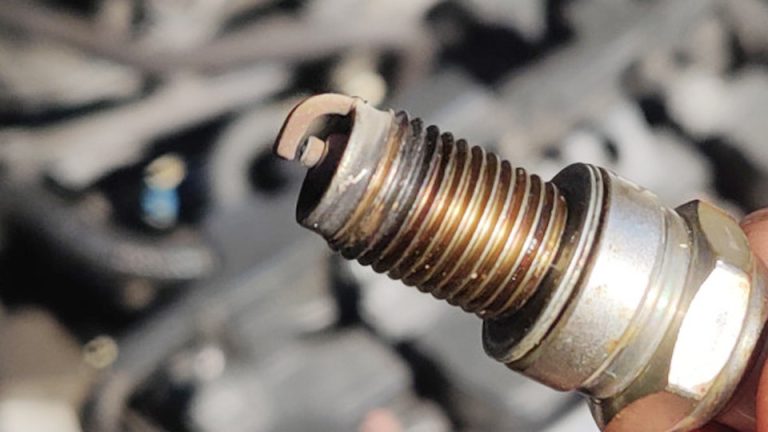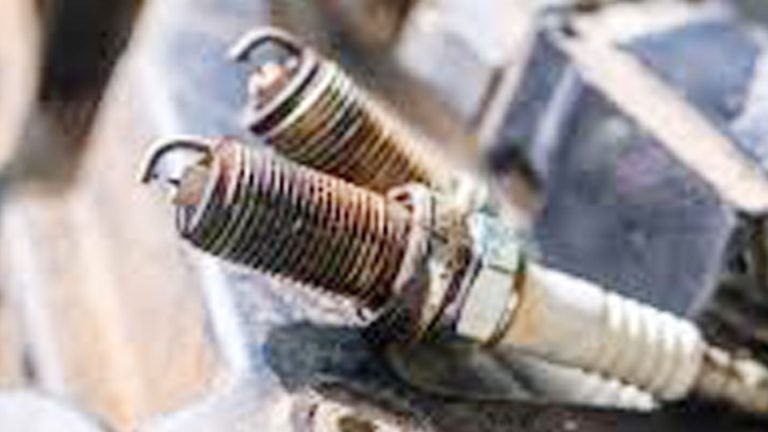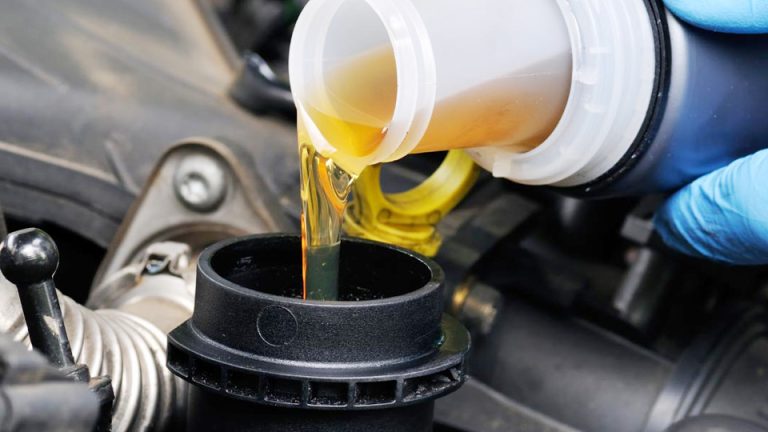A customer recently came in complaining that his car was hesitating every time he hit the gas. I’ve seen this countless times, and nine times out of ten, the culprit is worn or improperly gapped spark plugs. You’d be surprised how such a tiny detail can throw your whole engine off balance. That’s why one of the most common questions I hear is, “How to Find Spark Plug Gap for My Car?” Getting this right isn’t just about smoother starts — it affects fuel economy, power, and even how long your plugs last.
I’ve noticed many drivers overlook this step or guess at the measurement, which usually costs them more in the long run. Let me share the proper way to check and adjust your spark plug gap so your car runs the way it should.

Image by carfromjapan
What is a Spark Plug Gap and Why Does It Matter?
The spark plug gap is that precise distance between the tip of the center electrode and the ground electrode. It’s usually measured in thousandths of an inch or millimeters, like 0.035 inches for many modern engines.
This gap is where the magic happens. High voltage jumps across it to create a spark, igniting the fuel. Too wide, and the spark might not arc properly, leading to weak combustion. Too narrow, and it could cause pre-ignition or fouling. In my experience, getting it spot-on boosts horsepower, improves throttle response, and cuts emissions—key for passing those strict US smog tests.
Why care about it for safety and performance? A bad gap can cause engine knock, which stresses pistons and rods. I’ve pulled apart a Toyota Camry engine once where ignored misfires from wide gaps led to a cracked block—expensive lesson. On the flip side, right gaps mean better mileage; I’ve tuned Subarus that gained 2-3 MPG just from proper gapping.
Cost-wise, ignoring it hikes repair bills. Plugs are cheap—$5-20 each—but a full set plus labor? Easily $200+. Reliability suffers too; think cold mornings when your Dodge won’t start because the gap’s off.
Signs Your Spark Plugs Need Attention
Spotting trouble early saves headaches. Common signs include rough idling, like your engine’s shaking at stoplights. I’ve diagnosed this on countless F-150s; feels like a mini earthquake under the hood.
Misfires are another red flag—your car hesitates or jerks during acceleration. Once, a customer rolled in with a Jeep Wrangler sputtering on the interstate. Pulled the plugs, and gaps were uneven from wear.
Poor fuel economy hits your wallet. If you’re filling up more often without reason, check those plugs. Hard starts, especially in cold weather, point to gaps that are too wide, making sparking tough.
Engine knocking or pinging under load? That’s often from improper gaps causing detonation. And don’t ignore the check engine light—codes like P0300 (random misfire) usually trace back here.
In the shop, I’ve seen fouled plugs with black soot from rich mixtures or oil buildup, widening gaps over time. If your exhaust smells funky or smokes, it’s time to inspect.
When Should You Check or Replace Spark Plugs?
Timing is everything. Most manufacturers recommend checking every 30,000-60,000 miles, but replace at 60,000-100,000 for iridium plugs common in US vehicles like GMs and Toyotas.
Why replace? Wear erodes electrodes, widening the gap naturally. Heat cycles and combustion byproducts accelerate this. In high-mileage cars, like a Honda Accord I worked on with 150k miles, gaps had stretched 0.010 inches, causing sluggish performance.
Replace when symptoms appear, or during tune-ups. For boosted engines in Subarus or Mustangs, check more often—turbo heat wears plugs faster.
Neglect it, and you risk reduced power, higher emissions, or catalytic converter damage. I’ve advised folks to swap plugs before long road trips; nothing worse than breaking down in the desert.
OEM vs aftermarket comes into play here. OEMs like those from Ford or Toyota last longer but cost more. Aftermarket options from NGK or Bosch can match quality at half the price, but verify compatibility.
How to Find the Correct Spark Plug Gap for Your Specific Car
This is the heart of it—finding that magic number. Start simple: grab your owner’s manual. It’s usually in the maintenance section, listing gaps by engine code. For my old ’98 Chevy Tahoe, it was 0.060 inches stock.
No manual? Head to the manufacturer’s website or app. GM’s MyChevrolet app has specs for Silverados; Toyota’s site lists for Camrys. Input your VIN for precision.
Auto parts stores like AutoZone or Advance Auto are goldmines. Tell them your make, model, year, and engine—they’ll pull up the gap from their database. I’ve done this for customers countless times; beats guessing.
Online databases shine too. Sites from spark plug makers like Champion or Denso have lookup tools. Enter your vehicle details, and boom—gap specs appear.
For older rides, like classic Mustangs, cross-reference with forums or Haynes manuals. But always double-check; a wrong gap on a vintage V8 can fry coils.
If you’re swapping plug types, like from copper to platinum, the gap might differ. Consult the plug’s packaging—it’s printed there.
Using VIN and Engine Codes for Accurate Specs
Your VIN is key. The 10th digit tells the year; engine code is often on a sticker under the hood. For Fords, it’s the 8th digit.
I’ve hunted down specs for obscure engines this way—a 3.6L Pentastar in a Chrysler 300 needed 0.043 inches. Mismatch that, and you’re in for trouble.
Cross-Referencing with Spark Plug Manufacturers
Brands like NGK provide catalogs. Their app lets you scan your old plug for equivalents. Bosch’s site has a gap finder tool tailored to US models.
I once compared specs for a VW Jetta: OEM was 0.032, but NGK suggested 0.028 for better performance in cold climates.
OEM vs Aftermarket Spark Plugs: Making the Right Choice
Choosing between OEM and aftermarket? OEMs are factory-spec, like AC Delco for GMs or Motorcraft for Fords. They fit perfectly, last 100k miles, but run $10-15 each.
Aftermarket from reputable brands—NGK, Denso, Champion—offer similar life at $5-10. They’re widely available at Pep Boys or O’Reilly in the US.
Pros of OEM: Exact match, warranty-friendly. Cons: Pricey, sometimes overkill for daily drivers.
Aftermarket pros: Cheaper, often upgraded materials like iridium for hotter sparks. Cons: Quality varies; cheap no-names foul fast.
I’ve installed both. On a client’s BMW, OEM Bosch plugs smoothed idle better than generics. But for my beater Civic, NGK aftermarkets saved cash without issues.
Here’s a quick comparison table:
| Aspect | OEM Spark Plugs | Aftermarket Spark Plugs |
|---|---|---|
| Brands | AC Delco, Motorcraft, Mopar | NGK, Bosch, Denso, Champion |
| Price (per plug) | $10-20 | $5-15 |
| Lifespan | 60k-100k miles | 40k-100k miles (varies by type) |
| Compatibility | Perfect for your model | Good, but check specs |
| Performance | Reliable stock | Can be tuned for better efficiency |
| Availability | Dealerships, online | Auto stores nationwide |
Weigh your needs: Daily commuter? Aftermarket fine. Performance build? Stick to OEM.
Step-by-Step Guide to Gapping Spark Plugs
Ready to gap? First, gather tools: feeler gauge, gap tool, anti-seize, torque wrench.
Step 1: Remove old plugs. Use a socket (usually 5/8″ or 16mm) with extension. Twist gently to avoid breaking.
Step 2: Inspect new plugs. Out-of-box gaps are presets, but verify.
Step 3: Measure with feeler gauge. Slide the blade in; it should drag slightly—not loose or tight.
Step 4: Adjust if needed. Use the gap tool to bend the ground electrode carefully. Don’t touch the center tip.
Step 5: Apply anti-seize to threads. Install hand-tight, then torque to spec (10-20 ft-lbs typically).
Step 6: Reconnect wires or coils. Start engine, listen for smooth run.
I gapped plugs on a Ram 1500 once—factory was 0.040, but for towing, we tightened to 0.035 for peppier response.
Safety first: Disconnect battery, wear gloves, work on cool engine to avoid burns.
Common Mistakes When Gapping Spark Plugs and How to Avoid Them
Biggest blunder: Over-bending the electrode, cracking porcelain. I’ve fixed that mess—new plug needed.
Another: Not torquing properly. Too loose, plugs back out; too tight, strips threads. Use a wrench, not impact gun.
Forgetting anti-seize leads to seized plugs later. In salty Midwest winters, that’s a nightmare.
Gapping without checking specs—seen it cause pinging in Hyundais.
Anecdote: A newbie in the shop gapped all plugs the same on a V6 Ford, ignoring bank variations. Engine ran rough; lesson learned.
Avoid by double-checking measurements, working methodically.
Tools You’ll Need for Spark Plug Work
Essentials: Spark plug socket with rubber insert to grip plugs.
Feeler gauge set—brass ones for accuracy.
Gap adjustment tool, like a coin-style or ramp.
Torque wrench for precise tightening.
Dielectric grease for boots, preventing sticking.
Safety gear: Gloves, eye protection. In garages, we always unplug the battery first.
For pros, a borescope checks cylinder health without full teardown.
Budget tip: A $20 kit from Harbor Freight does the job for DIYers.
Identifying Genuine Spark Plugs vs Fakes
Fakes flood the market, especially online. Genuine NGK has laser-etched codes; fakes smudge.
Check packaging: OEMs have holograms or QR codes. Bosch boxes feel premium, not flimsy.
Weight them—real iridium plugs are heavier.
Buy from trusted US spots: NAPA, dealerships. Avoid shady eBay deals.
I’ve spotted counterfeits on a bulk buy; they fouled in weeks. Stick to verified sellers.
Maintenance Best Practices for Long-Lasting Spark Plugs
Check gaps every oil change. Clean with wire brush if fouled, but don’t sand electrodes.
Use fuel additives for clean combustion. In ethanol-heavy US gas, it helps.
Monitor ignition system—bad coils widen gaps faster.
For classics, copper plugs need frequent gapping; modern iridiums are set-and-forget.
Pro tip: Log your last plug change in a notebook or app.
Anecdote: Helped a fleet of delivery vans; regular checks cut downtime 20%.
Conclusion
Wrapping this up, nailing the spark plug gap for your car is about precision and know-how—it keeps your engine firing efficiently, saves on gas, and boosts reliability. Whether you’re hunting specs in your manual or tweaking with a feeler gauge, remember: the right gap means smoother rides and fewer shop visits. Make smarter choices by prioritizing quality plugs that match your driving style—OEM for peace of mind, aftermarket for value.
FAQ
What Happens If Spark Plug Gap Is Too Wide?
If the gap’s too wide, the spark weakens or misses, causing misfires, poor acceleration, and higher emissions. I’ve seen it lead to catalytic converter failure in older Chevys—costly fix. Narrow it properly to restore power.
Can I Use the Same Spark Plug Gap for All Cars?
No way—gaps vary by engine. A Subaru might need 0.044 inches, while a Ford V8 wants 0.054. Always check your specific model’s specs to avoid damage.
How Often Should I Replace Spark Plugs in a High-Mileage Vehicle?
For cars over 100k miles, swap every 30k-60k, depending on type. Iridium lasts longer than copper. In my experience with high-mileage Toyotas, early replacement prevents bigger issues like valve damage.
Are Iridium Spark Plugs Worth the Extra Cost?
Absolutely, for most US drivers. They last 100k miles, resist fouling, and improve efficiency. On a client’s Prius, switching to iridium gained MPG without drama—pays off long-term.
What Tools Do I Need to Check Spark Plug Gap at Home?
A feeler gauge, spark plug socket, and torque wrench are musts. Add anti-seize and grease. It’s simple garage work; I’ve taught buddies to do it in under an hour.



